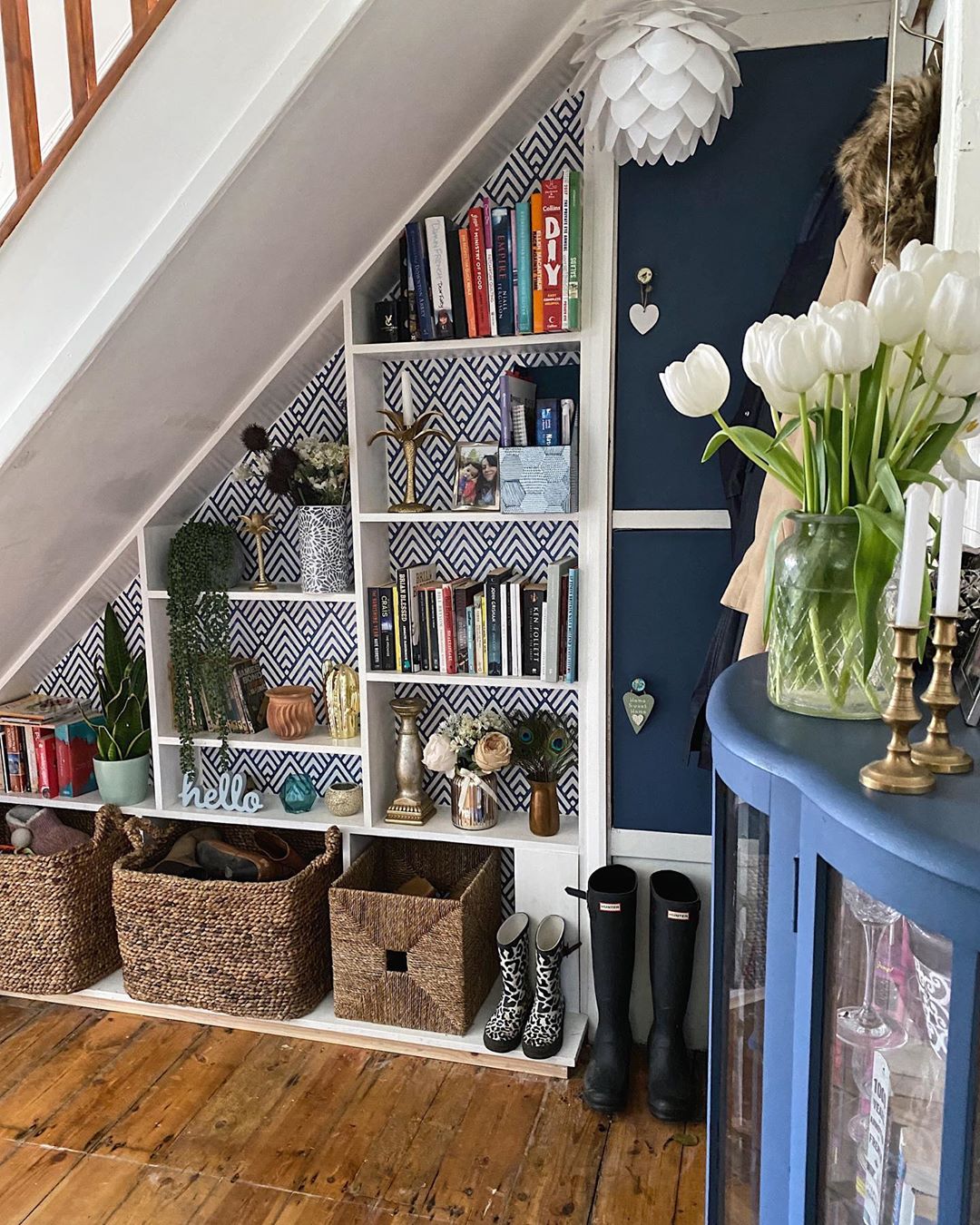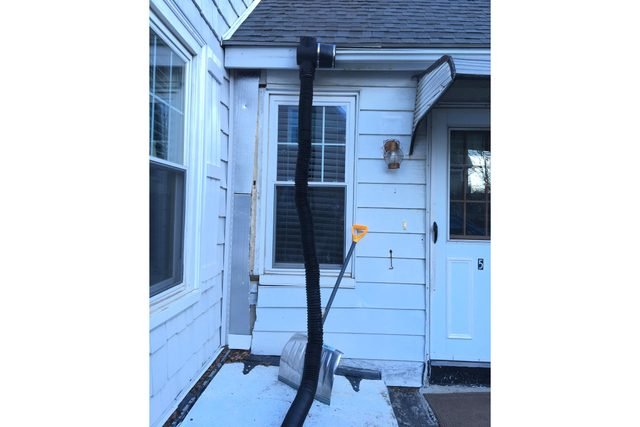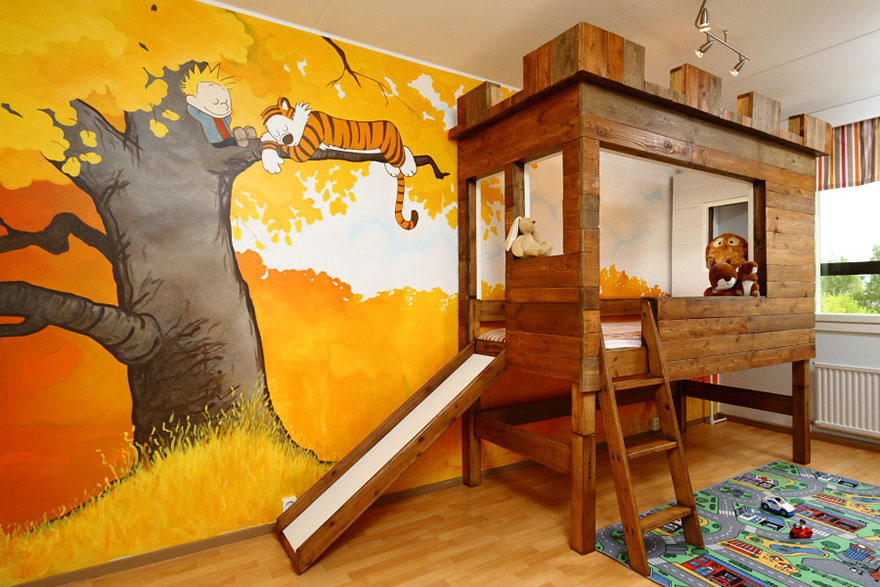
The bathroom was remodeled by the homeowner in 2013. It now has a larger 25-square foot shower. The shower has a built-in bench and toiletry niche. The quartz that adorns the walls is the same marble tile that complements the niche's backing and the floor. The space's overall design is high-end and polished. This bathroom is ideal to accommodate two adults.
The transformation of this bathroom began with a guest bedroom off the hallway. The existing bathroom was too small, so a new shower was required. The homeowner chose to keep the original shower and wall tile and changed the layout of the vanity. The bathroom was also fitted with new black and patterned tile flooring. After the initial renovation, the homeowner kept the existing shower, but opted to paint the walls black. The new look goes well with the black and white patterned tile flooring.

The next step is to replace your toilet. The most important part in a bathroom remodel is the toilet. The toilet can be a difficult task. You can consult a Lowe’s guide if you haven't had to do this before. A new shower will bring life to the space. You'll be able to see the difficulty of remodeling your bathroom by having done it yourself.
When renovating a bathroom, you'll have to remove all of the fixtures and drywall. After you have replaced the bathtub and fixed up the toilet, the shower can be installed. You need to ensure that the new shower fits in with the rest the decor. Before you install the new shower, think about where and how the door will look in relation to the tub. Planning a remodel requires consideration of many factors, including where to put the sink and the door.
The bathroom was originally a drab bathroom that had an old toilet and a wall-mounted sink. The bathroom was unsuitable for its drab, pink-colored color combination. The homeowner decided to replace the old vanity with white tiles. She also replaced her old faucet with a new, sleek sink and a mirror. And after all, it's time to start preparing for a vacation.

A bath fitter installs all plumbing, accessories, and replaces it with a seamless water-tight bathtub. To match the space, he will install custom-made walls and bases. The new bathroom will look completely different to the old one. The bathroom will offer a peaceful oasis for the entire family. A bamboo vanity will enhance the natural beauty of the room. An ideal spot to store your toiletries and other bathing necessities is the recessed niche in the wall.
FAQ
How can you avoid being ripped off during renovations to your house?
To avoid being scammed, it is essential to fully understand the terms of your contract. Make sure you read every word of the contract before signing it. Blank contracts should not be signed. Always request a copy of any signed contracts.
Are permits necessary to renovate my property?
Permits are required before you can start any home improvement project. In most cases, you will need a building permit and a plumbing permit. You may also need a zoning permit depending on the type of construction you are undertaking.
How Much Does It Cost To Renovate A House?
Cost of renovations depends on the material used, how large the job is and how complex it is. Wood, for example, requires additional tools such as saws and drills. Steel, however is not so dependent. The price of renovations will depend on whether you need your contractor to do everything or if the work is done by you.
The average cost of home improvement projects ranges from $1,000 to $10,000. The total cost for a home renovation project would be $5,000 to $25,000 if you hire professionals. If you hire professionals, the cost would be between $5,000 and $25,000. However, if the task is done entirely by yourself, the cost could rise to as high as $100,000.
It is important that you are aware of the many factors that affect the final price of renovations. These include the material used (e.g. brick vs concrete), the size of the project, the number of workers involved, the length of the project, etc. These are important considerations to remember when estimating total renovation cost.
Can you live in your house while it's being renovated?
Yes, I can live in my house while renovating it.
You can live in a house that is being renovated while you are renovating it. The answer depends on how long the construction work takes. If the renovation process lasts less than 2 months, then yes, you can live in your home while it's under construction. If the renovation takes longer than two weeks, however, you can't live in your home during the construction.
Because of the possibility of falling objects, you shouldn't live in your home while a major construction project is underway. A lot of heavy machinery is used at the jobsite, which can lead to noise pollution and dust.
This is particularly true if you live on a multi-story home. This is because the vibrations and sound created by construction workers could cause serious damage to your property.
You'll also need to cope with the inconvenience of living in temporary housing while your house is being renovated. This means that you won't have access to all the amenities that come with your own home.
For example, you will not be able to use your washing machine and dryer while they are undergoing repair. You will also have to put up with the smell of paint fumes and other chemicals as well as the loud banging sounds made by the workers.
All these things can lead to anxiety and stress in your family. It is therefore important to plan ahead so that you don't end up feeling overwhelmed by the situation.
It is important to research before you start renovating your house. This will help you avoid costly mistakes down the road.
You can also consider professional advice from a trusted contractor to ensure smooth running of your project.
Is there anything I could do to save on my home renovations?
It is possible to save money by doing the work yourself. For example, you could try to cut down on the number of people you use during the renovation process. You can also find ways to reduce costs for materials during the renovation.
Do I have to renovate my entire house?
Why pay someone to do it for you when you can do it yourself?
It doesn’t matter how much DIY is your passion, sometimes it can be difficult to do the job yourself. You might not be able control many of the variables.
For example, if you live in an old home, you might find that the wiring is outdated and you would need to hire a qualified electrician to make sure that your electrical system is safe and reliable.
Consider that you may not be able repair any structural damage that might have occurred during the renovation.
Additionally, you may not have the right tools to complete the job. You will need a special tool called the plumber's snake to clean clogged pipes if you plan to install a kitchen sink.
There are plumbing codes that will require you to hire a licensed plumber for your project.
You must be confident in your abilities before you attempt such a difficult task.
Ask your friends and family for help if you're unsure if the job is possible.
They can give you advice on what steps you need to take and where you can go to learn more about the subject.
Statistics
- The average fixed rate for a home-equity loan was recently 5.27%, and the average variable rate for a HELOC was 5.49%, according to Bankrate.com. (kiplinger.com)
- Most lenders will lend you up to 75% or 80% of the appraised value of your home, but some will go higher. (kiplinger.com)
- Design-builders may ask for a down payment of up to 25% or 33% of the job cost, says the NARI. (kiplinger.com)
- ‘The potential added value of a loft conversion, which could create an extra bedroom and ensuite, could be as much as 20 per cent and 15 per cent for a garage conversion.' (realhomes.com)
- A final payment of, say, 5% to 10% will be due when the space is livable and usable (your contract probably will say "substantial completion"). (kiplinger.com)
External Links
How To
Are you renovating the exterior or interior first?
Which one should I first do?
There are many factors to consider when deciding which project to start with. The most common factor when choosing a project is whether it is old or newly built. If the building is old, then there are many things to take into consideration such as the condition of the roof, windows, doors, flooring, electrical system, etc. There are many aspects to consider when a building is brand new. These include the size and style of the rooms, as well as their location.
If the building is old, the first thing to look at is the roof. If your roof seems like it is about to fall apart, then you should get on with the renovation. You can proceed to the next step if the roof is in good condition. Next, take a look at the windows. If they are broken or dirty, then you might want them replaced before doing much else. Next, check the doors for debris and clean them up. Once everything is clean, you can then begin to put the floors together. Be sure to ensure that the flooring is stable and strong so that you can walk on it without slipping. The next step is to check the walls. You can now examine the walls to check for cracks or damage. If the wall is fine, then you should proceed to the next step. The ceiling can be finished after the walls have been examined. Check the ceiling and make sure that it is strong enough to hold up whatever weight you decide to put on it. Once everything is in order, you can proceed with your renovation.
If the building was built recently, then you would probably want to start with the exterior. Take a look at the outside of your house. Is the house well-maintained? Is there any cracks? Does it look great? If the exterior doesn't look great, then you should definitely fix it. Your home shouldn't look shabby. Next, check the foundation. If your foundation appears weak, you should fix it. Also, make sure to inspect the driveway. It should be level and smooth. It should be smooth and flat. If it isn’t, you need to fix it. You should also inspect the sidewalk while you're checking your driveway. If the sidewalk is uneven, it should be replaced.
Once these areas are checked, you should move on to the inside of the house. The kitchen is the first thing you should inspect. Is it clean and well kept? You should clean up any mess. Next, make sure to inspect the appliances. The appliances should be in good working order. If they aren’t in great shape, then either you buy new ones or replace them. The cabinets should be inspected after that. If the cabinets are stained, or have been scratched, you can probably paint them. If they are in great condition, then you can go to the bathroom. In here, you should check the toilet. If it leaks, it is time to get a new one. It's best to wash it if it's only dirty. Next, check out all the fixtures. You should make sure they are clean. You should clean them if they are stained. Lastly, check the countertops. If the countertops are cracked or chipped, you might want to repaint them. If they are smooth and shiny you can use a sealant.
The last step is to check the furniture. Make sure that none of it is missing or broken. If it's missing or damaged, you need to find it. You should repair anything that is damaged. After everything has been checked, you can go outside to finish the job.